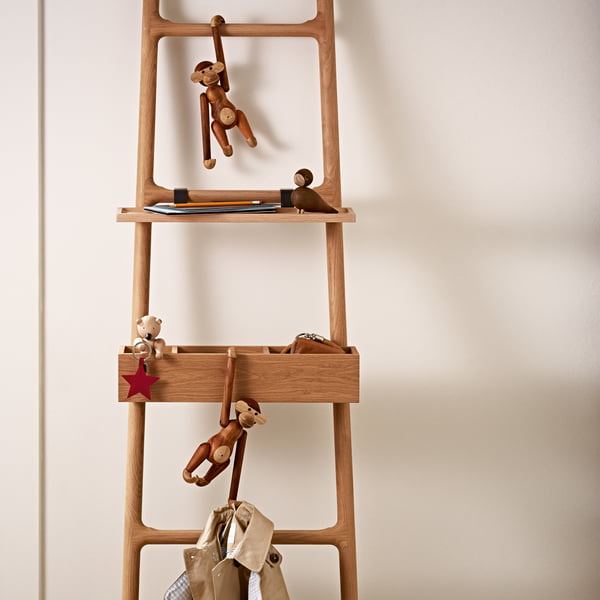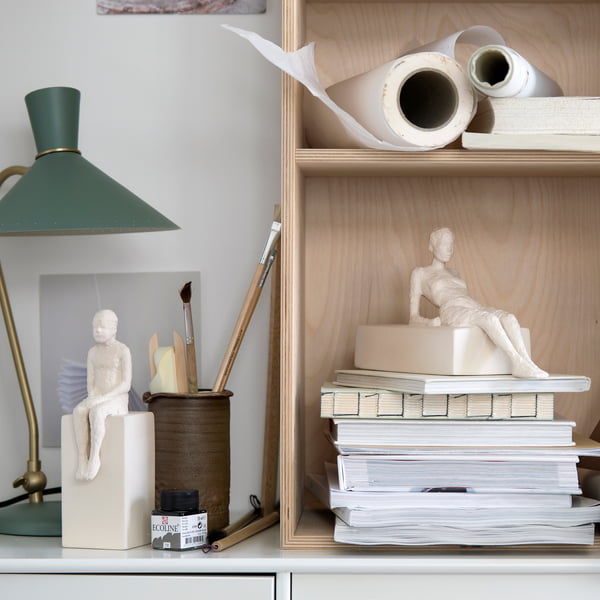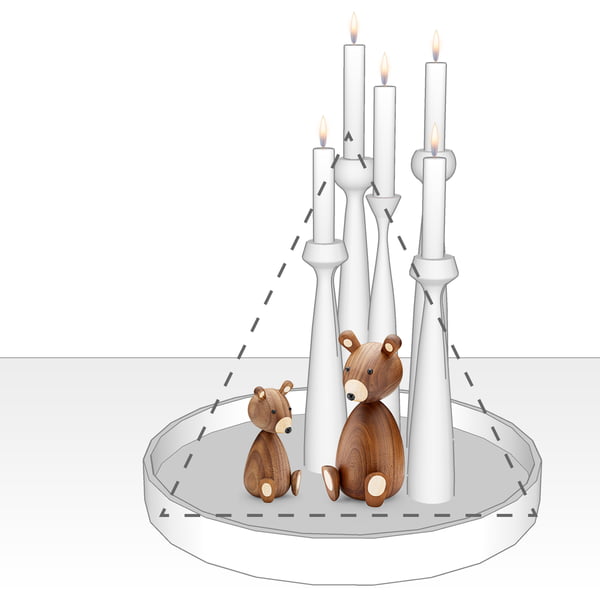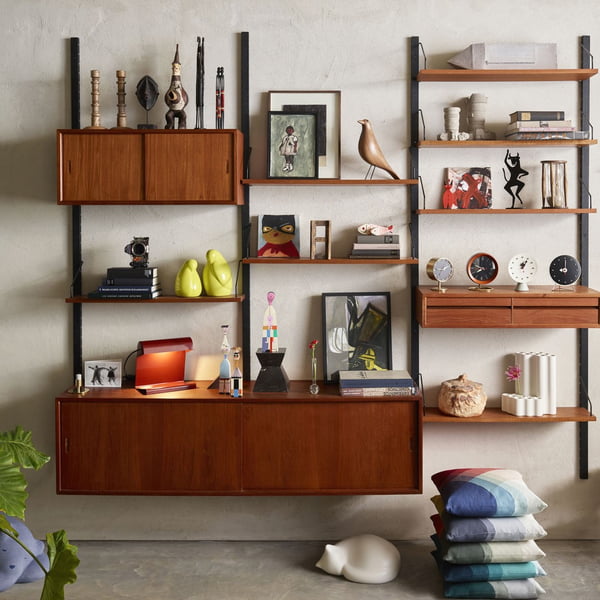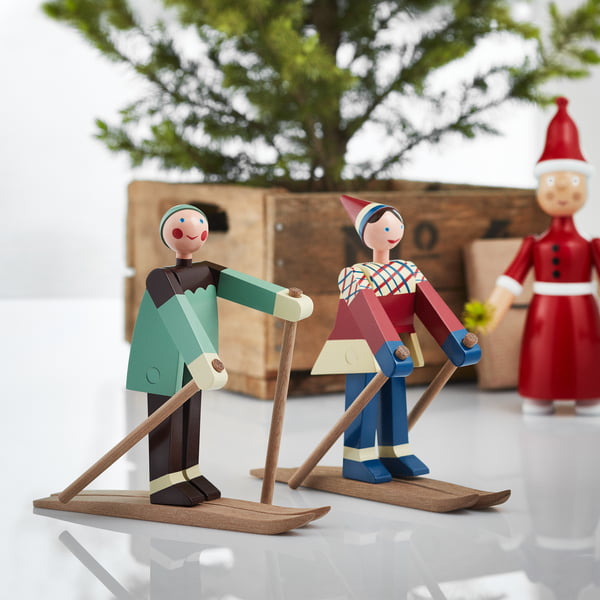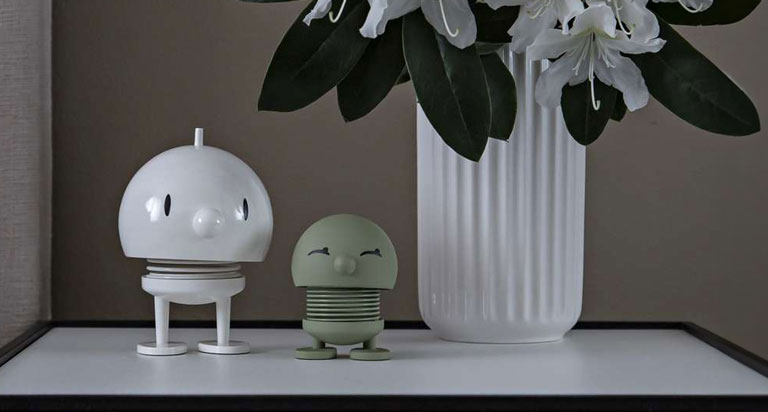Buy decorative figures online: how to find the right design object
- Decorative figures for different interior styles
- Combining decorative objects
- Decorate seasonally
- Conclusion
Decorative figurines are the finishing touch to home decor. They complement the typical home accessories such as candles, vases or decorative bowls and complement the living ambience. They can also be mementos, souvenirs from the last holiday or original gift ideas.
1. Decorative figures to match the style of furnishing
In addition to classic decorations made of porcelain and mouth-blown glass, which fit into almost any ambience, there are also decorative figures that represent certain styles of living.
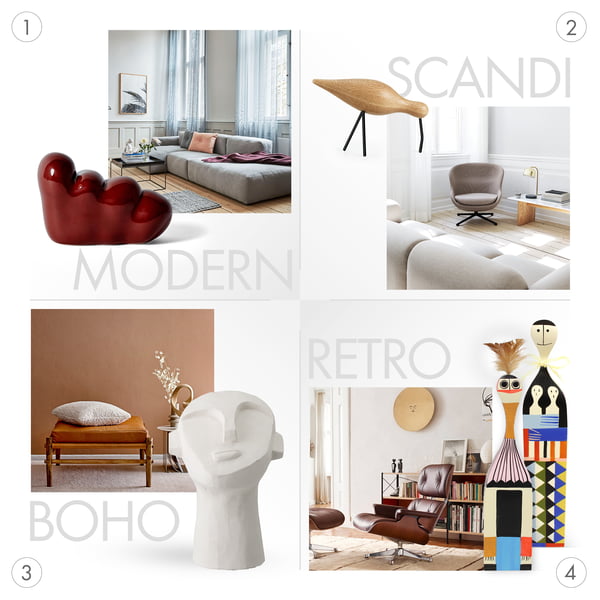
Modern (1): Decorative figurines that reflect the modern style are characterized by abstract, undefinable shapes. They are made of almost any material and have exciting surface finishes . As with the manufacturer Hay, artful, novel and alienated sculptures are created .
Scandi (2): Decorative figures made of natural materials such as wood fit in well with the Scandi style. They have a clear design language and are often figuratively designed, like the wooden animals by Kay Bojesen . The design classics have unique grain and the color of the wood gives the animal figures an individual appearance. They bring the necessary attention to detail to a minimalist ambience.
Boho (3): Sculptures by Bloomingville or HKliving appear in boho style, with a subtle colour scheme and soft or curved shapes. Materials used are mainly ceramics, porcelain or concrete with a natural feel. Ceramics in particular are a popular material, as they allow unusual shapes and imaginative design of the objects.
Retro-chic (4): Colourfully painted decorative objects with a reduced form, which is nevertheless unambiguous, go well with retro-chic. Expressive materials such as marble are used, for example. With their extraordinary charm and colourful designs, the figures by Vitra are a real eye-catcher.
Funny decorative figures as an expression of folklore come with their own wit and personality. Figures in Eclectic or Individual Style, for example by Lucie Kaas or Hoptimist, are bright and colourful and have a humorous design.
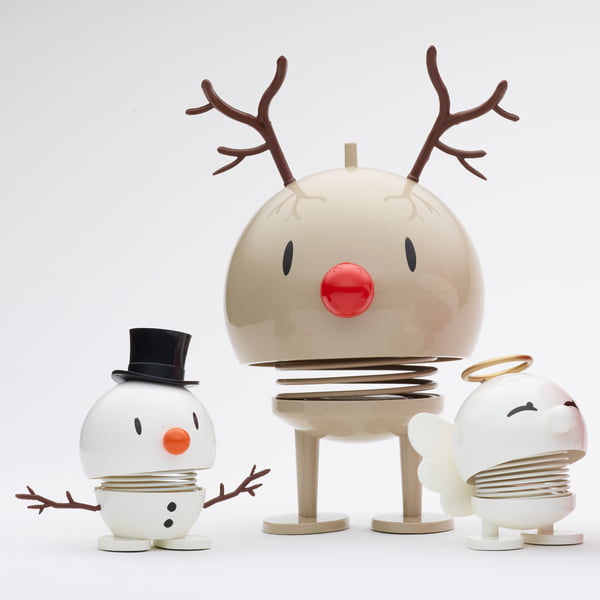
When it comes to appearance, the chosen material plays an important role. The interplay of structure, grain, colour and feel determines the design of the decorative figure. Handmade design objects are also a special quality feature.
2. Arranging decorative figures correctly
Combine figures from one series or put the same object in different designs together. The mix of different materials, styles or colours is particularly exciting.
In a minimalist Scandi ambience or in an interior in black and white, the same material and a similar design language have a harmonious effect.
It looks particularly harmonious if you choose an odd number of decorative figures . And arrange different accessories as a triangle - so the arrangement looks harmonious.
Dekofiguren are suitable as addition to the vase and or candle arrangement on a tray, a chest of drawers, the side table or the windowsill. Alternatively, the design objects can be presented on a shelf or sideboard .
"According to the size of the decoration figure it is to be distinguished whether it remains a soloist or should become a component of an arrangement. As a general rule, the smaller the figure, the more attention it attracts in conjunction with other accessories as a complement." - Viktoria, interior design expert
Dekofiguren do not necessarily have a fixed location, but can change places at will . In this way, new arrangements are created effortlessly with small figurines.
3. Decorate seasonally: Decorative figures for Christmas or Easter
With Christmas figures or Dekofiguren to Easter the correct Ambiente is conjured into the dwelling. However, decorative figures are not only available to match the seasons, there are also many themed designs regardless of the season. Maritime decoration figures find their way into the bathroom, while decoration figures like animals find a place everywhere.
Decorative figures are also an original gift idea and are suitable for personal occasions and as souvenirs. They tell stories, make you think, smile or rejoice.
4. Conclusion - how to find the right design object when buying online
- Design figurines should be selected to match the interior style. There are, for example, modern figures, figurative objects in the Skandi style, figures in the Boho style and colorful designs suitable for retro chic.
- The size decides whether the decorative figure remains a soloist or should be part of an arrangement.
- Different figures from a series or the same decorative object in different sizes, materials or colours should be combined.
- An uneven number of decorative figures should be decorated.
- A harmonious arrangement is created when different accessories such as decorative figurines, candles or vases are arranged as a triangle or pyramid.
- Decorative figures are available for seasonal occasions such as Christmas or Easter. But also think of personal occasions, memories or decorative figures as an original gift.
